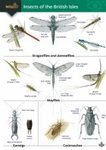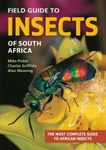About this book
Dr. Allen Carson Cohen's new edition of Insect Diets: Science and Technology continues to provide a current, integrated review of the field of insect diets. It reaffirms and expands upon the belief that the science of diet development and the technology of diet application in rearing programs require formal foundations and guidelines. Cohen argues for a data-driven approach as well as a focus on humane treatment in insect rearing programs.
Insect Diets: Science and Technology, Second Edition also calls for academics and industries to make a new push toward statistical process control (SPC) in their approaches to rearing in general, using his own work with insects as a paradigm. This approach yields the benefits of careful scientific analysis by addressing issues of quality and efficiency in academic research and industrial practices and applications.
What's New in the Second Edition: This edition expands upon the role of food science in the use of artificial diets in rearing programs, especially texture analysis with rheological techniques. It includes an entirely new chapter focused solely on the subject of food quality in insect diets. Insect Diets: Science and Technology, Second Edition also revisits microbial relationships to insect diets as a powerful influence on their feeding processes and emphasizes a new, better understanding and utilization of the relationship between insects and microbes in artificial diets. Cohen also expands his vision of the future of insect rearing, including the use of insects themselves as a potential food source for a rapidly expanding global human population.
To that end, Insect Diets: Science and Technology, Second Edition gives you guidelines to develop, use, and evaluate artificial diets in order to improve their cost and scientific efficiency in the rearing of insects, because as the author urges, it is important to "know your insect". This understanding will serve the multifaceted goals of using insect rearing for research and teaching, pest management strategies and biocontrol agents, as food for other organisms, and for many other purposes.
Contents
Preface to the Second Edition
Acknowledgments to the Second Edition
Preface to the First Edition
Acknowledgments to the First Edition
Author
Scope of Insect Diet Science and Technology
Introduction
Food Science and Food Technology and Insect Diet Programs
Subdisciplines of Food Science and Technology
Diet in the Context of a Rearing Facility
Insect Diets and Rearing: Why Science and Technology Rather Than Art?
Selected Books and Journals on Food Science and Food Technology
Diet Terminology and History of Insect Diet Science
Introduction to Diet Terminology
Historical Aspects of Insect Diet Science and Technology
Other Historical Diets and Historically Significant Concepts
Function of Insect Diet Components
Introduction to Functional Aspects of Diet Components
Essential versus Nonessential Nutrients
Purposes of Individual Diet Ingredients and Nutrient Functions
Minerals
Feeding Stimulants
Protective Ingredients
Nutritionally Inert Ingredients Provide Texture
Importance of pH and Its Influence on Diets
Water Content (Percentage) and Water Activity
Nutritional Profile of Five Diet Prominent Components
Overview of Diet Additives
Emulsifiers
Gelling Agents and Stabilizers
Antioxidants
Antimicrobial Agents
Flavoring Agents
Colorizing Additives
Bulking and Texturizing Agents
Chelating Agents
What Makes a Diet Successful or Unsuccessful?
Overview
Terminology Regarding Success and Failure of Diets
Minimal Nutrients (The Simple Nutrient Model)
Minimal Nutrient Concept
Rules of Nutrient Sameness, Nutrient Proportions, and Cooperating Supplements
Examples of Excellent Diets and Why They Are Successful
How Organizational Matrices Contribute to Successful Diets
Vitamin and Mineral Sources in Successful Diets
Issue of Bioavailability
Chemistry and Physics of Insect Diets
Introduction to Diet Chemistry and Physics
Bioenergetics and the Nature of Energy in Insect Diets
Nature of Water and What It Means to Insect Diets
Nature of pH and How It Affects Diet
Oxygen and Reactive Oxidative Species (ROS) Present in Diets
Factors That Affect Diet Texture
Processing History of Diets: Physical Qualities of Diets?
Chemistry of Proteins and Amino Acids in Diets
Chemistry of Carbohydrates in Diets
Chemistry of Nucleic Acids in Diets
Chemistry of Vitamins in Diets
Dealing with Changes
Introduction
Confusion over Product Name Differences
Unavoidable Changes in Diets and Other Components
Changes in Production Procedures
What to Do If You Must Make Changes
Making Changes: Developing Strategic Planning Systems
Testing Changes: The Hallmark of Stable Rearing Programs
Using the Ingredient Cycle Concept
Insect Feeding Biology (Digestive System Anatomy and Ultrastructure, Physiology and Biochemistry of Digestion, Feeding Behavior, and Sensory Systems) and the Logic of Metabolic Systems
Introduction and Overview of Insect Feeding Systems
Insect Feeding Habits
Preingestion and Postingestion Processing
Liquids and Solids and Slurries, Oh My!
Insect Gut: A Study in Complexity
Mean Retention Times and Diet Composition
Regulation of Digestive Function
Structure and Organization of Insects’ Digestive Systems
Macromolecular Complexes—Macromolecules—Large Subunits—Simple Molecular Subunits
Metabolic Logic: What Happens to Food Components after Insects Consume Them?
Feeding Specialization and Gross Anatomy of Insect Digestive Systems
Insectary and Rearing System as a Context for Diets: Order and Complexity in Nature and in Diet-Based Rearing System
Order and Unpredictability: An Overview
Orderliness of Systems in Nature
Factors That Influence Diet Complexity
Paradox of Nutrients and Antinutrients
Unexpected Changes after Management Decisions
Conscious Decisions and Hidden Factors
Changes in the Order or Nature of Processing Steps
Importance of Iron in Insect Diets
Back to the Context of the Insectary and Rearing System
Nutritional Ecology and Its Links with Artificial Diets
Introduction to Nutritional Ecology and Artificial Diets
Nutrients and Antinutrients in the Foods of Insects
Plant Secondary Compounds, Feeding, and Artificial Diets
Efficiency Indices
Sifting through the Functional Role of Components
Artificial Diets as Delivery Systems for Testing Antinutrients and Toxins
Special Examples of Nutritional Ecology Applications
How Artificial Diets Are Developed and Improved
Difficulties in Diet Development Methodologies
Starting Out: The First Steps in Diet Development?
Using Diets Developed for Insects with Similar Feeding Habits, Including Derivative Diets with and without Host Extracts
Use of Food Analysis as a Basis for Diet Development
Use of Whole Carcass Analysis in Diet Development (an Alternative Analytical Approach)
Radioisotopes and Diet Deletion Techniques
Use of Digestive Enzymes as Aids in Diet Development
Nutrient Self-Selection, Geometric Analysis, and Statistical Optimization Approaches
Heuristic Approach
Eclectic Approach: Constructing a Diet Development Algorithm
Development of Minimal Daily Requirements
Fundamentals of Process Control, Quality Control, and Problem Solving
Introduction to Process Control, Quality Control, and Insectary Problem Solving
Relationships between Process Control and Quality Control: Historical Perspectives and an Overview
Variability and Error: Causes and Treatments
Example of Gaining Control over Variables in Wheat Germ
Four Diet/Process Control Criteria
Linking Process Control in Diets to Quality of Insects Produced
Attributing Quality Loss in Insects Reared on Artificial Diets
Measurement of Whole Diet and Component Quality
Development of Problem Solving Strategies, Quality Assessment, Quality Control Standards, and SOPs
Logistical and Statistical Background: Using Process Control Statistics and Charts in the QC Environment
Some Concluding Comments: Tipping Points, Incremental versus Saltatory Factors, and Pareto Thinking—A Case Study from a Cactus Moth Diet Development Project
Equipment Used for Processing Insect Diets: Small-, Medium-, and Large-Scale Applications
Introduction
Applications of the Geometry of Scale: Heat Exchange in Diet Processing
General Small-Scale Processing
Medium- to Large-Scale Diet Processing
Water Purification and Water Quality
Storage of Ingredients and Completed Diets
Standards of Acceptable Quality
Ultralow Temperature Storage
Size Reduction of Ingredients
Size Reduction of Meat Products and Eggs
Size Reduction in Plant Materials
Mixing
Heat Processing
Packaging and Containerization
Future Prospects
Microbes in the Diet Setting
Overview of Microbe/Insect Interactions in the Rearing Setting
Symbiosis, Mutualism, and Commensalism: Microbes That Have Beneficial or Neutral Relations with Insects
Contamination: Microbiology of Foods and Insect Diets
Using a Mixture of Two or More Kinds of Preventative Actions to Reduce Microbial Contamination
Common Contaminants in Insects, Insect Diets, and Rearing Settings
Other Techniques Used to Remove, Reduce, or Ameliorate Microbial Contaminants
Cold Techniques
Chemotherapy and Chemical-Based Prophylaxis
Physical/Radiation Techniques
Decontamination Procedures Can Deteriorate Diet Quality
Finding a Safe Middle Ground: Optimizing and Balancing Microbial Contaminant Treatments with Insect Well-Being
Future Prospects in the Microbiology of Insect Diets: Probiotics, Prebiotics, and Novel Antimicrobials
Studies of Biofilms
Integration of Food Industry Sanitation with Insect Diet Production
Safety and Good Insectary Practices
Introduction: Safety and Good Insectary Practices Are Completely Congruent
Chemical Hazards
Proper Storage and Disposal of Potentially Hazardous Chemicals
Microbial Hazards and Other Biological Hazards
Special Issue of Smoking in Conjunction with Rearing
Mechanical and Thermal Hazards
Electrical Hazards
In General
Introduction to Texture, Consistency, and Rheology in Insect Diets
Chris Daubert, Chris Pernell, and Allen C. Cohen
Introduction
Relationship between Consistency (Texture) and Rheology
Some Food Science Background
Applications of Rheology to Insect Diets
Future Prospects for Insect Diets: Introduction
Application of Food Science and Food Technology Principles
Progress in Equipment Applications
Food Matrix Analysis
Development of Symptomology of Nutritional Deficiencies
Development of Highly Refined Bioassays
Development of Process Control Systems
Application of Fermentation and GMO Technology
Advanced Technologies for Detecting and Handling Microbial Contaminants
Advancements in Techniques to Characterize the Species and Nature of Symbionts
Application of Advanced Nano-Analysis Techniques for Nutrient Evaluations on an Ultrasmall Scale
Application of Research Techniques with Advanced Microscopy Tools
Improved Diet Components by Application of Engineered Foods through Refinement of Processing Technology
Expanding the Scope of Insect Rearing: New Uses for Mass-Reared Insects (Including Production of Insects as Human Food)
Applications of Rheological Principles of Texture Analysis for Texture Improvement and Process Control
Twenty-First-Century Insect Diet Professional: Suggestions for a New Curriculum and Educational Profile
Publishing on Insect Diets in the Twenty-First Century
Twenty-First-Century Insect Diet and Rearing Professional: At Formal Professional Standing
Introduction to Analytical Procedures for Statistical Process Control of Diets
Developing Statistical Process Control Procedures
Sanitation and Contamination: Determining the Cleanliness of Facilities in the Context of SPC
Diet Processes That Affect Quality of Diet-Based Rearing Outcomes
Other Processes Related to Diets or Insectary-Based Diet Context
Context of the Insectary: Organization of Insectary Rooms, Climate, and Personnel
Insects in Relation to Diets
References
Appendices
A: Glossary of Diet and Diet-Related Terms
B: Historical Landmarks in Insect Diets and Events That Set the Stage for Diet Advancements, History of Artificial Diets for Insects, and Events of Significance to Diet-Related Insect Rearing
C: Vitamin and Mineral Mixtures Commonly Used in Insect Diets
D: Process Control of Environmental Parameters
E: Explanations of Accuracy and Precision in Measuring Diet Components
F: Bioassays in Diet Development, Quality Control, and Testing Effects of Additives
Customer Reviews
Biography
Allen Carson Cohen completed his high school education in Chicago, Illinois and went to university in California for a BA and MA in English and a teaching credential. He later returned to college for an MA in biology, specializing in the physiological ecology of rattlesnakes. He completed his PhD in entomology at the University of California, Riverside (1978). He has served for seven years as editor for insect diets, insect rearing, and insect feeding biology for the Journal of Insect Science and serves as a mentor for students, researchers, and professionals in diet and rearing science and technology. He holds six U.S. patents, has published more than 125 refereed papers, and has received several technology transfer awards for his work on insect diets. He is currently research professor and coordinator of the Insect Rearing Education and Research Program at North Carolina State University, where he teaches online and in-person courses on insect rearing and conducts research on developing and improving insect rearing systems.




































